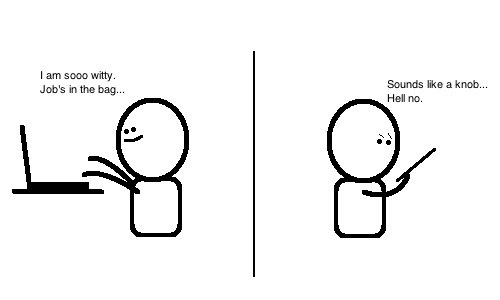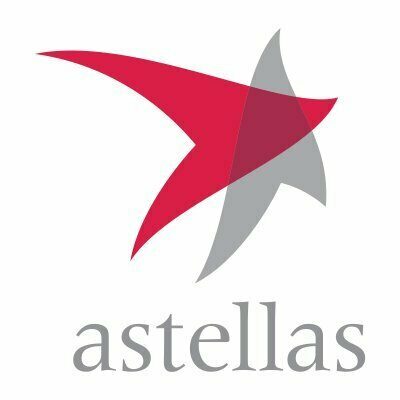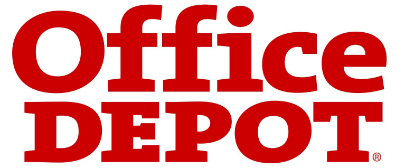Revealed: The secret life of the perfect statistical analyst for you

• You won’t believe how young she was when she learned long division • More letters after her name than you’ve had hot dinners • Check out the MOOCs on him! • SAS, SPSS, and Stata: everything you need to be pooled t-test-ready this summer • Sources: “He’s the Madonna of data analysts”
This post is not about how to lay out your CV, whether you should include a photograph, or whether it should be two pages long or three pages long. It’s about the narrative – the reverse chronological narrative – that makes anyone reading it want to meet you and find our more. Inspiration is drawn from a range of sources, including tabloid newspapers and click-bait websites.
A list of skills at the top of your CV is a bit like a newspaper headline. It needs to catch attention by being relevant to the person reading, while the rest of the CV gives the full details of the story. The skills should match what’s in the job description and should be things that are rare and valuable. For example, it turns out that the ability to run around a lot is quite common among professional footballers so is not valued all that highly whereas the ability to score in every game is.
Story-telling
If a CV is about constructing a narrative, you want to be the hero of your story, demonstrating your wisdom and integrity throughout your working life. Like Eternal Sunshine of the Spotless Mind, it starts at the end and works backwards through your career to show how it all came to pass. Unlike in films though, you’ll need to avoid holes in the plot so a story about any gap and overlap might be necessary. Volunteering positions have a couple of advantages: They can cover those gaps in your chronology and can make you look like a hero. (If you’ve spent time between jobs looking after your own children and telling them stories, you’re already a hero!)
There’s a way of working all the important information about you into the career history bit. For any description of duties in a role or of course assignments, you can get in a list of the tests with which you’re familiar by making sure you mention the multi-level logistic regression or structural equation modelling used on that project. Something that can complement this part of your CV is a website. If your CV is too short for all your marvellous achievements, there’s a chance a CV reviewer will be happy to do some online stalking.
Programming
The longer the list of software nyms and acronyms you can put on your CV the better. Something like “HLM, Matlab, Minitab, Mplus, R, SAS, SPSS, SQL, Stata, Tableau, and WesVar” would be good. For statisticians, there are three possible effects. Firstly, they’ll nod sagely as they tick off the list of programmes they too have used. Secondly, they’ll be impressed that you’re on the cutting edge and are familiar with something they’ve never heard of. Thirdly, they’ll feel threatened and see you as an upstart because you’re on the cutting edge and are familiar with something they’ve never heard of. Two of those three are worth the risk of the third.
Massive Open Online Courses (MOOCs) are usually free, available to complete in your own time, and accredited in a way that’s still developing. Because MOOCs are still in the early stages of development, there’s massive variation in content, delivery methods, assessment methods, and accreditation systems. For the purposes of your CV story, a line for each course you’ve completed is enough to show that you’re eager to continue learning, prepared to invest in your career, and ever so slightly more experienced than someone who hasn’t done an extra course.
If you’ve had a paper published in a peer-reviewed journal, congratulations! It’s rarely a bad thing to mention them on your CV, but remember: A journal paper is not a horcrux. Tempting as it might be to think that by splitting your career into more and more pieces you can attain academic immortality, it’s just two lines on your CV, not part of your soul. There’s also the risk that a long list of publications can make you look too academic to some prospective employers. If it is long, a numbered list affords the possibility of quickly ascertaining that you’ve published 27 papers without reading all the titles.
Statisticians are human too, you see, and they have a limited attention span, especially for CVs. Again like a newspaper article, people might not always read right to the end. One approach is to make the story so utterly compelling that they not only read every word but ring you up straight away to ask for more details. Realistically, most CVs are quite boring so you want to make sure the good stuff is at the start. In the same way that a lot of tabloid celebrity story-telling is like an ad for their up-coming product, service, or event, your CV is an ad for you and your skills and hopefully anyone who reads it will want a ticket.
PS: Advice to recruiters: Please don’t make us fill in an application form. It’s all there in the CV anyway and life’s too short for so much copying and pasting!
Related Posts
Sign up to receive our weekly job alert
Featured Jobs
Armagh Observatory and Planetarium
Armagh, Northern Ireland
May 17, 2024
The Competition & Markets Authority
Belfast, Cardiff, Edinburgh, London or Manchester
April 24, 2024
The Competition & Markets Authority
Belfast, Cardiff, Edinburgh, London or Manchester
April 24, 2024
















